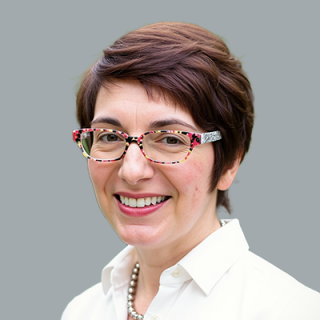Blog
The Auditors’ View of the Current SPAC Market
The SPAC market is chugging along with several IPOs and multiple deals being announced and closed. Although it's great to see this kind of activity again, the SPAC market is never without its challenges.
For this edition of the SPAC Notebook, I speak with two members of Withum's Financial Services' audit team, Joe Fede and Disha Patel, to discuss the current state of the SPAC market and what we can expect in the near future. This article includes highlights of our conversation, edited for clarity. You can watch the complete discussion below.
Current Pressing Issues for SPACs
Joe Fede: It's a tale of two markets, depending on where you are in your SPAC journey. We have some trailing SPACs coming up against their timeline. They have older structures and are probably running out of cash, as well as time. They're going up against a resurgence of new SPACs with some better terms and longer time horizons.
The combination of new SPACs, some with different sponsor groups and some with different terms, and the liquidity crisis the older SPACs are facing, is a real challenge. As these new SPACs come into play, there will also be some macroeconomic-level issues, with an election coming up and changes in interest rates. All of that will play a big role in the IPO process moving forward for the fourth quarter of 2024.
Yelena Dunaevsky: It's been a difficult process for some of my clients because the liquidity crunch for older SPACs feeds into what needs to be done on the insurance side.
Take as an example an original two-year directors and officers (D&O) insurance program that is long expired and needs to be extended. When you continue to seek extensions and a deal is not on the table yet, it becomes a continuous negotiation to keep the insurance for the SPAC afloat so there are no coverage gaps. We've been successful in getting that done, but it's a difficult and painful process.
Disha Patel: All of that adds pressure on the de-SPAC side for those vintage SPAC IPOs coming up on three years. There's also pressure to complete the deal and other factors they're not considering, like making sure the D&O is updated. It's a matter of having the right people in the right place to help you navigate that time frame.
Yelena Dunaevsky: You absolutely have to have advisors who have done this before to help you get through it. I saw recently that the New York Stock Exchange is not going to be able to extend past the three-year mark. So that's another set of pressures.
Issues for SPAC Targets to Consider
Disha Patel: Regardless of the company's path to the public markets—whether it's a traditional IPO, a direct listing, or the SPAC vehicle—the current market is a hurdle given the uncertainty in the last couple of years. Some questions targets should address are:
- Is the right management in place?
- Are their audits PCAOB (Public Company Accounting Oversight Board) compliant?
- Are the proper controls in place to move forward?
- With a public company, will there be a PIPE or another financing agreement? How does that play into the timeline for going public?
Our best tip is that if a target company is considering an IPO at some point, they should speak with their auditor about remaining PCAOB independent as they're performing private company or AICPA audits. This way, when the company is ready to pursue the capital markets, there are no independence issues with the auditor they currently have in place.
At Withum, we, for example, have private operating companies that are considering an IPO at some point. We remain PCAOB-compliant from an independence perspective so that when the time does come for them to hit the capital markets, the audit is an upgrade from an AICPA audit to a PCAOB audit, rather than them having to start from scratch.
It's a simpler process and doesn't take as long.
On a de-SPAC org call, for example, our first question is, "Is your audit ready?" You'd be surprised at how often the response is, "No, we've never been audited."
It goes back to having the right people in the right places to point you in the right direction and help make that timeline or pressure more bearable.
Joe Fede: It's important to understand that not every deal is the same. A lot can happen in the public market space in six months on both the target side and the SPAC side to where a deal that made sense six months ago doesn't make sense anymore for the marketplace.
That's pressure for the SPAC, and the target company has to be aware of that. So, do your due diligence to make sure you're ready to invest the time and money to become a public company. Once that deal closes, you're a public company no different than any other public company out there, especially from an accounting standpoint.
What's Ahead for SPACs?
Disha Patel: So far, 2024 has been a better year for the SPAC market relative to 2023 and 2022. We've seen a modest increase in the number of SPAC IPOs this year versus last year. It's hard to see what the rest of the year could look like, given the upcoming election.
We've noted that while there are more IPOs than in previous years, there are a lot of repeat sponsors that have had some success in the past and are looking to do it again. There's also regulatory scrutiny with respect to the new rules, and it’s taking additional time to review S-1 registration statements. It could result in higher costs to the sponsor group and a longer timeline to get to the IPO to ultimately complete a deal.
Yelena Dunaevsky: On the insurance side, the 2024 market for SPACs has been infinitely more favorable and friendlier this year than it was in 2021 and 2022. More carriers are competing for the business, and they have a better understanding of the SPAC process.
Pricing is driven by the overall D&O pricing in the market, which has been the softest D&O insurance market we've seen in many years due to fewer traditional IPOs coming to market. There are opportunities and good terms available, especially if you work with people who are knowledgeable in this space.
I expect this trend to continue—despite the election—into 2025.
Joe Fede: When you look at the market now, it is what I consider to be a new normal. I don't think we'll ever touch that high number we had in 2020 and 2021. However, I think the sponsors that are invested in this industry will be around to stay.
In the near term, we'll see two different types of sponsor groups. First, the aggressive ones will look to price and go public—no matter what the results of the election are or the interest rates—by Thanksgiving.
The other, more cautious, ones will file an S-1 and aim to go public the first quarter of next year. Anything after six months from now can change at the drop of a hat.
The SPAC space is always a hurry-up-and-wait scenario. If something changes, you have to pivot as fast as you can. I know we'll be ready to help all the sponsors we can.
I think the SPAC market is here to stay and it's healthy. We'll see what happens in the next six to eight months.
Author
Table of Contents









